Left Handed Electric Guitars: The Complete Guide for Southpaw Strummers
Have you ever picked up a right-handed guitar and felt like you were trying to write with your non-dominant hand? That awkward, frustrating feeling is all too familiar for lefties in a right-handed world. As a left-handed guitarist myself with over 15 years of experience playing, teaching, and reviewing instruments, I understand the unique challenges that southpaw players face in finding the perfect electric guitar.
The good news? You’re not alone, and you’re in excellent company. From Jimi Hendrix and Kurt Cobain to Tony Iommi and Paul McCartney, some of the most influential guitarists in history were lefties who found their way in a right-handed world. Today’s guitar market offers more options for left-handed players than ever before, and I’m here to guide you through finding your perfect match.
In this comprehensive guide, I’ll share everything I’ve learned about left handed electric guitars – from the history and evolution of southpaw models to the best options available today at every price point. Whether you’re just starting your musical journey or looking to upgrade your current instrument, this article will help you navigate the sometimes confusing world of left-handed guitars with confidence.
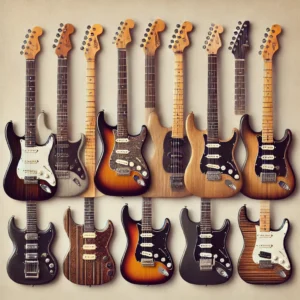
Understanding Left Handed Electric Guitars: The Basics
Before diving into specific models and recommendations, let’s cover some fundamentals about left handed electric guitars.
What Makes a Guitar “Left-Handed”?
A true left handed electric guitar is essentially a mirror image of its right-handed counterpart. This means:
- The body is flipped horizontally
- The pickups are arranged in reverse order (bridge pickup is now closest to your chin)
- The controls (volume, tone knobs) are positioned differently
- The cutaways are reversed
- The pickguard (if present) is designed for the opposite orientation
- The nut is cut to accommodate strings in reverse order
- The bridge is angled appropriately for proper intonation
Some left-handed players might ask, “Can’t I just flip a right-handed guitar upside down?” While Jimi Hendrix famously did this with his Stratocaster, it’s not ideal for most players. When you simply flip a right-handed guitar, the controls end up in awkward positions, the body contours feel wrong against your body, and the pickups are arranged in reverse (with the bridge pickup where the neck pickup should be, changing your tone).
The Left-Handed Guitar Market: Past and Present
I remember shopping for my first electric guitar in the early 2000s. The options for lefties were painfully limited – usually just one dusty model hanging in the corner of the shop, if there was anything at all. The salesperson would inevitably suggest, “Why not just learn right-handed?”
Thankfully, times have changed. Major manufacturers like Fender, Gibson, Ibanez, and PRS now offer left-handed versions of many popular models. Smaller companies like Schecter and ESP often have impressive selections for lefties, and some boutique builders like Southpaw Guitars specialize exclusively in left-handed instruments.
That said, lefties still face some challenges:
- Fewer model options compared to right-handed versions
- Limited color and configuration choices
- Potentially higher prices (the “lefty tax”)
- Longer waiting times for special orders
- Fewer options on the used market
Choosing Your First Left Handed Electric Guitar
If you’re new to the world of electric guitars, here are some key factors to consider when making your first purchase:
Body Style and Comfort
The shape and weight of an electric guitar significantly impact your playing experience. Some popular body styles include:
- Stratocaster-style: Contoured body with a comfortable arm cut and belly cut
- Telecaster-style: Simple, slab body design with a distinctive twangy sound
- Les Paul-style: Thicker, heavier body with a warm, rich tone
- SG-style: Lightweight, double-cutaway design with excellent upper fret access
- Offset styles (Jazzmaster, Jaguar): Ergonomic designs originally created for seated playing
I started with a Stratocaster-style guitar and found its contoured body perfect for long practice sessions. Your physical comfort is crucial – a guitar that feels uncomfortable will collect dust rather than inspire you to play.
Neck Profile and Scale Length
The neck shape (profile) and scale length affect playability and comfort:
- C-shape necks: Medium thickness, comfortable for most hand sizes
- U-shape necks: Thicker, more substantial feel
- D-shape necks: Flatter back with more shoulders
- V-shape necks: Distinctive center ridge
Scale length refers to the vibrating length of the strings from nut to bridge:
- Fender standard (25.5″): Tighter string tension, crisp attack
- Gibson standard (24.75″): Slightly looser feel, warmer tone
As a lefty with smaller hands, I’ve found that shorter scale guitars (like Gibson-style instruments) require less stretch, making complex chords easier to play.
Pickups and Electronics
Electric guitar pickups come in two main varieties:
- Single-coil pickups: Bright, clear tone with more treble (found on Stratocasters, Telecasters)
- Humbucker pickups: Fuller, warmer sound with less noise (found on Les Pauls, SGs)
Consider what styles of music you plan to play. If you’re into blues, classic rock, or country, single-coils might be ideal. For heavier rock, metal, or jazz, humbuckers often work better. Many modern guitars offer combinations of both or coil-splitting options for versatility.
Budget Considerations
Left-handed guitars are available at virtually every price point:
- Entry-level ($200-500): Brands like Squier, Epiphone, and Ibanez offer quality beginner instruments
- Mid-range ($500-1000): Step up to Fender Player Series, higher-end Epiphones, and similar quality levels
- High-end ($1000-2500): American-made Fenders, Gibson Studios, PRS SE models
- Premium ($2500+): Custom Shop models, boutique builders, collector-grade instruments
Remember that a great affordable guitar is better than a mediocre expensive one. I’ve played $300 instruments that felt and sounded better than guitars three times their price.
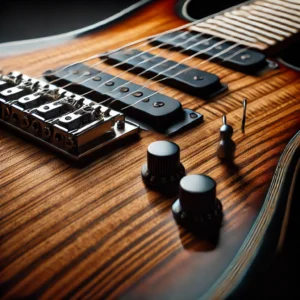
Top Left Handed Electric Guitars by Price Range
Based on my experience and extensive research, here are some of the best left handed electric guitars currently available:
Budget-Friendly Options (Under $500)
- Squier Classic Vibe ’50s Stratocaster Left-Handed – This guitar offers exceptional value with vintage-inspired features, a comfortable neck profile, and impressive build quality for the price. The alnico pickups deliver classic Strat tones that work well for blues, rock, and beyond.
- Epiphone Les Paul Studio LT Left-Handed – With a mahogany body, comfortable neck, and ceramic humbuckers, this affordable Les Paul delivers the chunky tone and classic look of its Gibson counterpart at a fraction of the price.
- Ibanez GRX70QAL Left-Handed – Perfect for players interested in harder rock styles, this guitar features a comfortable thin neck, humbucker/single/single pickup configuration, and a tremolo bridge for dive bombs and vibrato effects.
Mid-Range Options ($500-1000)
- Fender Player Stratocaster Left-Handed – Made in Mexico, this Stratocaster offers genuine Fender quality with Alnico 5 pickups, a modern C-shaped neck, and reliable hardware. It’s a versatile instrument capable of handling virtually any musical style.
- ESP LTD EC-256 Left-Handed – This Les Paul-style guitar features a mahogany body with maple top, roasted maple neck, and ESP-designed humbuckers. It’s particularly well-suited to rock and metal styles while remaining versatile.
- Schecter C-6 Deluxe Left-Handed – With its sleek double-cutaway design, comfortable neck, and powerful humbuckers, this guitar delivers excellent playability and tone for modern rock and metal players.
Premium Options ($1000+)
- Fender American Professional II Stratocaster Left-Handed – The American-made Strat features premium appointments including V-Mod II pickups, a comfortable “Deep C” neck profile, and impeccable craftsmanship.
- Gibson Les Paul Studio Left-Handed – This no-frills Gibson offers the legendary Les Paul tone and feel without cosmetic extras. With its Burstbucker pickups and classic mahogany/maple construction, it delivers authentic Gibson sound and playability.
- PRS SE Custom 24 Left-Handed – Featuring a maple top on mahogany body, 24-fret rosewood fingerboard, and versatile pickup configuration with coil-splitting capability, this guitar offers premium features at a relatively accessible price point.
Our Top Product Recommendations
After testing numerous left handed electric guitars, here are my top three picks currently available on Amazon:
- Fender Player Stratocaster Left-Handed in Polar White – This Mexican-made Stratocaster offers the perfect balance of quality, versatility, and value. With its comfortable maple neck, three single-coil pickups, and smooth tremolo system, it handles everything from blues to rock with ease. The classic white finish with black pickguard is timelessly stylish.
- Schecter Omen Extreme-6 Left-Handed in Black Cherry – This guitar punches well above its price class with premium features like a quilted maple top, coil-splitting humbuckers for tonal versatility, and a super-comfortable thin C neck profile. The stunning Black Cherry finish looks far more expensive than it is.
- Epiphone SG Standard ’61 Left-Handed in Vintage Cherry – This recreation of the classic 1961 SG features a mahogany body, SlimTaper neck profile, and Epiphone ProBucker pickups that deliver authentic vintage tone. The iconic devil-horned shape in Cherry finish is instantly recognizable.
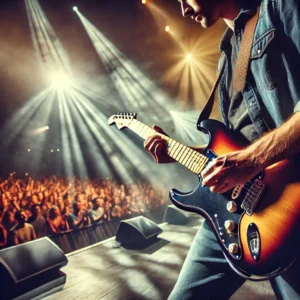
Here’s a comparison table of these three recommended instruments:
| Guitar Model | Body Style | Pickups | Neck | Best For | Price Range |
|---|---|---|---|---|---|
| Fender Player Stratocaster Left-Handed | Double-cutaway, contoured | 3 single-coils | Maple, Modern C-shape | Blues, rock, pop, country | $$$$ |
| Schecter Omen Extreme-6 Left-Handed | Double-cutaway | 2 humbuckers with coil-split | Maple, Thin C | Rock, metal, versatile | $$$ |
| Epiphone SG Standard ’61 Left-Handed | Double-cutaway | 2 humbuckers | Mahogany, SlimTaper | Classic rock, hard rock, blues | $$$ |
Famous Left-Handed Guitarists and Their Instruments
Finding inspiration from other southpaw players can help you discover which left-handed guitar might work for you:
Jimi Hendrix
Though famously known for playing a right-handed Stratocaster flipped upside-down and restrung, Hendrix occasionally used properly configured left-handed models as well. His unorthodox approach showed that rules are meant to be broken.
Kurt Cobain
The Nirvana frontman played several left-handed guitars, most notably his Fender Mustang and modified Jaguar. His preference for offset bodies showed that comfort and playability trump tradition.
Tony Iommi
The Black Sabbath guitarist lost fingertips in an industrial accident, forcing him to develop a unique playing style. He primarily played Gibson SGs throughout his career, demonstrating how a player can adapt to overcome challenges.
Paul McCartney
The Beatles bassist/guitarist has used numerous left-handed instruments, including his iconic Höfner violin bass and a left-handed Gibson Les Paul that he still plays today.
Albert King
This blues legend took the unusual approach of playing a right-handed Flying V upside down without restringing it, resulting in his distinctive “backward” string bending technique.
Common FAQs About Left Handed Electric Guitars
Are left-handed guitars more expensive than right-handed models?
In some cases, yes. The “lefty tax” is real – left-handed versions can cost 10-15% more than their right-handed counterparts due to lower production volumes. However, this price difference has decreased in recent years as manufacturers have streamlined their processes.
Should I just learn to play right-handed instead?
This is a personal decision. While learning right-handed might give you more guitar options, many left-handed players find it more intuitive and comfortable to play left-handed. I tried learning right-handed for six months before switching to left-handed, and my progress accelerated immediately after the switch.
Remember that many of the greatest guitarists of all time were lefties who chose to play left-handed. Don’t let anyone tell you it’s “wrong” to play the way that feels natural to you.
Can I convert a right-handed guitar to left-handed?
For some guitar models, yes, but it’s complicated. Converting a guitar properly involves:
- Restringing in reverse order
- Cutting a new nut to accommodate different string gauges
- Adjusting or replacing the bridge for proper intonation
- Possibly rerouting the body for electronics
Symmetrical guitars like Telecasters are easier to convert than asymmetrical models like Stratocasters. For most players, buying a properly manufactured left-handed guitar is the better option.
Are there left-handed acoustic guitars too?
Absolutely! Most major manufacturers offer left-handed versions of their popular acoustic models. The considerations are similar to electric guitars – body comfort, neck feel, and sound are the primary factors to evaluate.
Where can I find left-handed guitar accessories?
Most guitar accessories (picks, straps, cables) are universal, but some items like cases and wall hangers may be designed specifically for right-handed instruments. Online retailers like Southpaw Guitars and specialty stores often carry left-specific accessories.
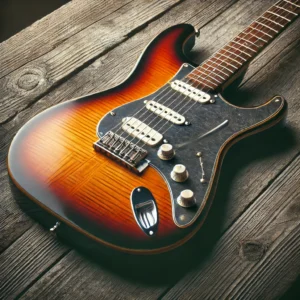
Left Handed Electric Guitar Techniques and Tips
Learning to play left-handed comes with some unique considerations:
Finding Learning Resources
Most guitar instruction books, videos, and tabs are designed for right-handed players. When using these resources:
- Use a mirror to reverse the fingering diagrams in books
- Look for specifically left-handed instruction materials (they do exist!)
- YouTube allows you to mirror some videos, which can be helpful
- Chord and scale diagrams can be mentally flipped horizontally
Adjusting Your Technique
Some techniques may need slight modifications:
- Strumming: The mechanics are reversed, so downstrokes use different muscles
- String bending: Your stronger fingers are on the thinner strings, potentially making some bends easier
- Picking techniques: Alternative picking patterns may feel different due to the reversed orientation
Setting Up Your Practice Space
Consider these factors when setting up your practice environment:
- Position mirrors strategically to check your technique
- Arrange furniture to accommodate your left-handed playing position
- Set up your gear with your cable running to the right (opposite of right-handed setups)
Maintenance Tips for Left Handed Electric Guitars
Caring for your left-handed guitar involves the same principles as any guitar, but with a few considerations:
String Changes and Setup
When changing strings on a left-handed guitar:
- Remove old strings one at a time (I usually start with the low E)
- Clean the fretboard while strings are off
- Install new strings in reverse order (thickest string at the bottom, thinnest at the top)
- Stretch strings properly to improve tuning stability
- Check and adjust intonation if necessary
Finding a Guitar Tech
Not all guitar technicians have experience with left-handed instruments. When seeking setup or repair services:
- Ask specifically about their experience with left-handed guitars
- Explain any unusual features of your instrument
- Consider learning basic setup skills yourself
Storing Your Guitar
Proper storage is crucial for maintaining your instrument:
- Use a case designed for left-handed guitars when possible
- Store in moderate temperature and humidity
- Position wall hangers appropriately for left-handed instruments
The Future of Left Handed Electric Guitars
The outlook for southpaw guitarists continues to improve:
Increasing Options
More manufacturers are offering left-handed versions of their popular models, and some are reducing or eliminating the price difference between left and right-handed instruments.
Custom and Boutique Builders
Small builders like Kiesel, Suhr, and Anderson often build left-handed versions with minimal or no upcharge, giving lefties access to high-end, custom instruments.
3D Printing and New Technologies
Emerging technologies like 3D printing and CNC manufacturing are making it more cost-effective to produce left-handed instruments, which may lead to even more options in the future.
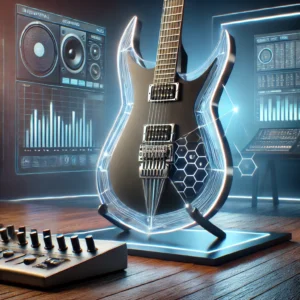
Conclusion: Embracing Your Southpaw Status
Being a left-handed guitarist isn’t a disadvantage – it’s what makes you unique. From Jimi Hendrix to Kurt Cobain, lefties have shaped the landscape of guitar-driven music with their distinctive approaches and perspectives.
Today’s market offers more options for left-handed players than ever before. Whether you’re just starting out or looking to add to your collection, there’s a perfect southpaw guitar waiting for you. Embrace your left-handedness, find an instrument that inspires you to play, and add your voice to the rich tradition of left-handed guitarists who have changed music history.
Remember, the perfect guitar isn’t about price tag or brand name – it’s the one that feels like an extension of yourself and inspires you to create. Trust your hands, ears, and instincts when choosing your instrument.
I hope this guide has helped you navigate the world of left handed electric guitars. If you have questions or want to share your own experiences as a southpaw strummer, feel free to leave a comment below!
More FQAs:
❓ What is a left-handed electric guitar?
✅ A left-handed electric guitar is designed as a mirror image of a right-handed guitar, allowing left-handed players to strum with their dominant hand...
❓ Can a left-handed person play a right-handed guitar?
✅ Yes, some left-handed individuals choose to learn on right-handed guitars, but many find left-handed guitars more comfortable and intuitive...
❓ Are left-handed electric guitars more expensive?
✅ Left-handed guitars can sometimes be more expensive due to lower demand and limited availability, but many manufacturers offer affordable options...
❓ Do left-handed guitars have different string arrangements?
✅ Yes, left-handed guitars are strung in reverse order compared to right-handed guitars, with the bass strings at the top and treble strings at the bottom...
❓ Are there famous left-handed guitarists?
✅ Absolutely! Notable left-handed guitarists include Jimi Hendrix, Kurt Cobain, and Paul McCartney, who have all made significant impacts in music...
For a visual guide on choosing the right left-handed electric guitar, check out this video:
Here are five awesome tips for left handed guitar players!
Recommended for You:
- The Complete Guide to Red Electric Guitars: Models, Brands & Buying Tips
- The Ultimate Guide to Mini Electric Guitars: Portable Powerhouses for Players of All Levels 2025
- Best Electric Guitars Left Handed Guitar: Ultimate Guide for Southpaw Players in 2025
Disclaimer: This article contains affiliate links. If you purchase products through these links, we may earn a small commission at no additional cost to you.

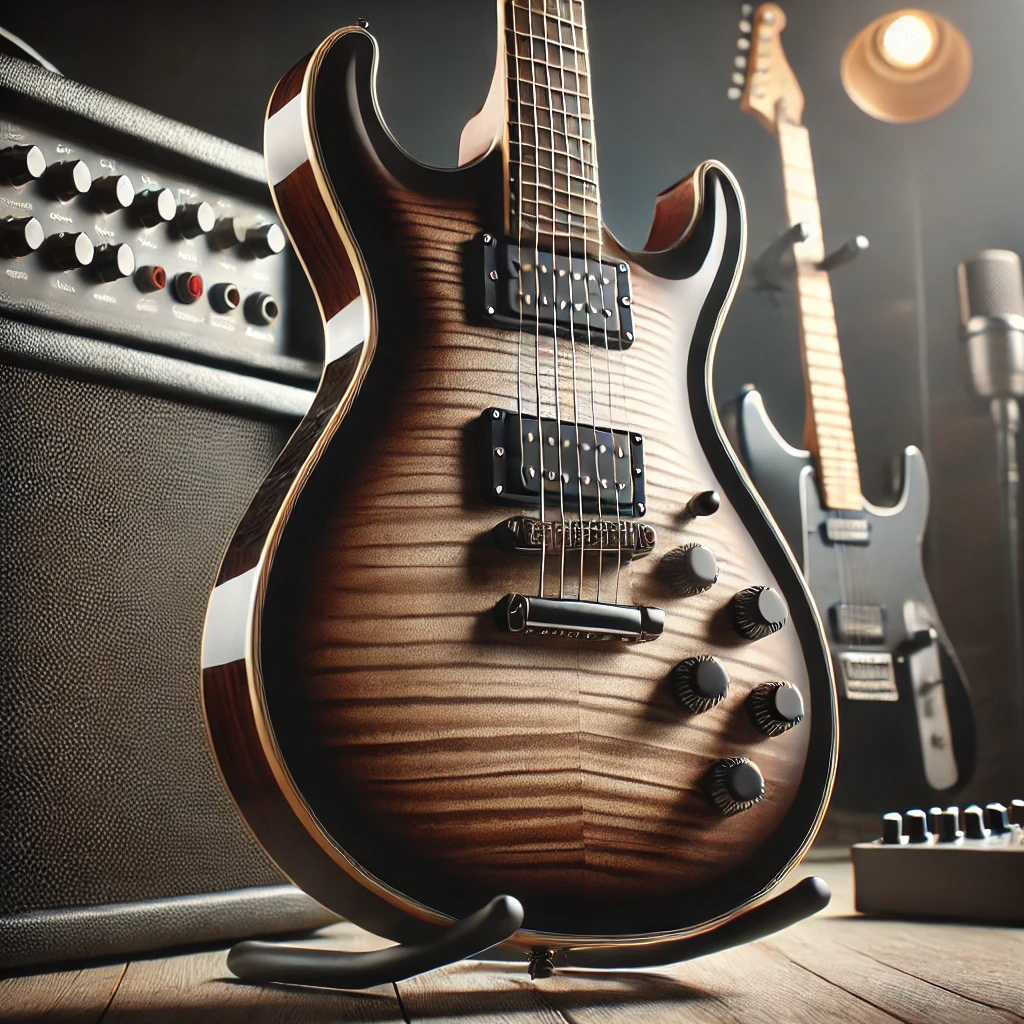

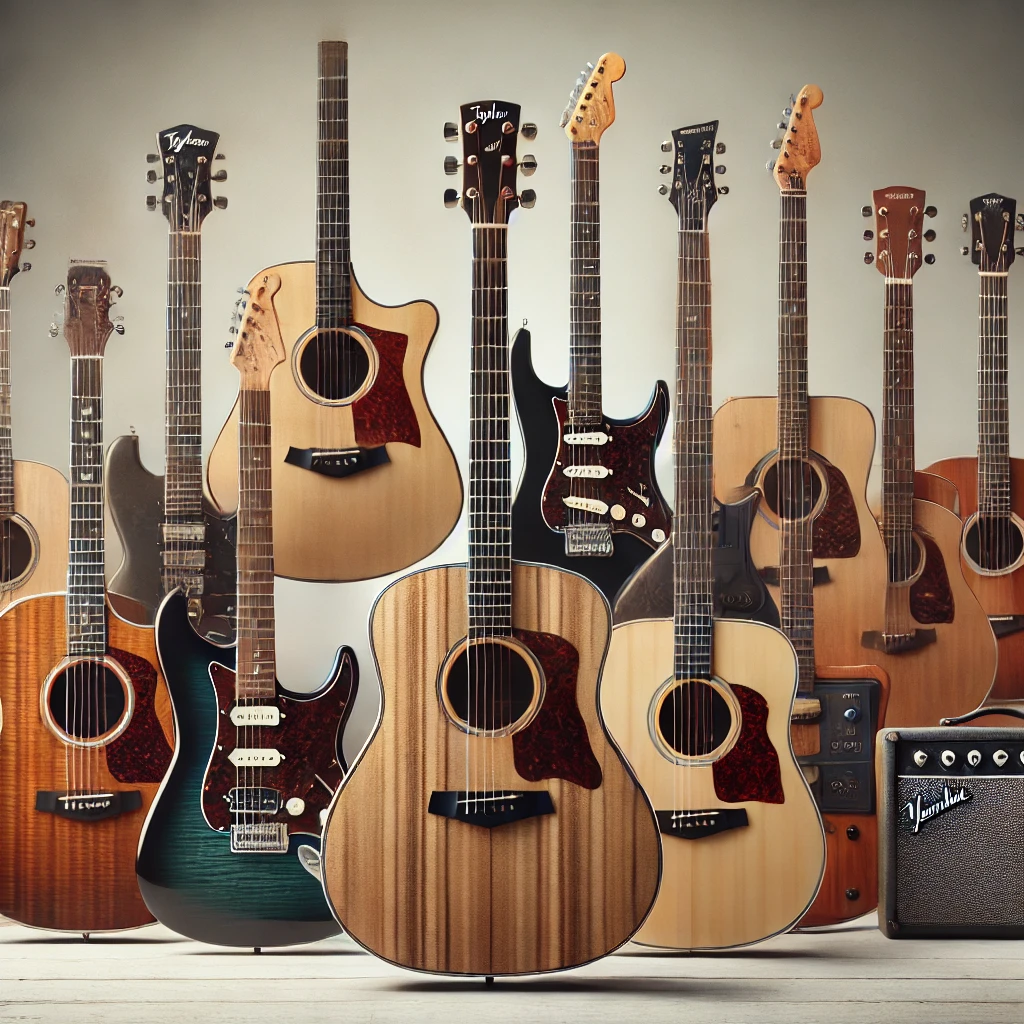
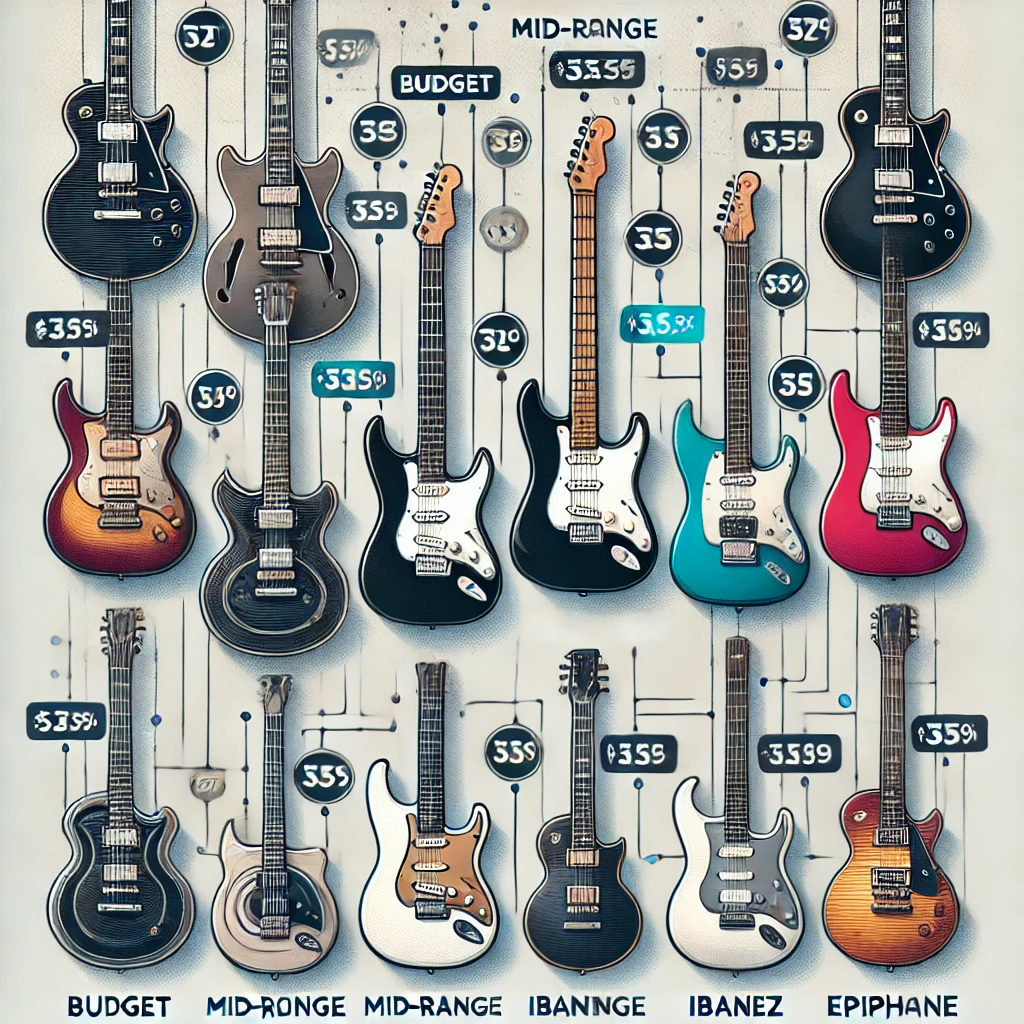

2 thoughts on “Top Left Handed Electric Guitars: The Ultimate Guide for Southpaw Players 2025”
Comments are closed.